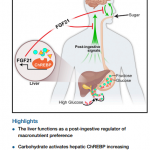Traditional Okinawan Diet: Sweet Potatoes
This is incredible. Almost 70% of the calories in the traditional Okinawan diet came from sweet potatoes. That according to an extensive investigation of six decades of archived population data published in 2007.1 And that wasn’t the only carbohydrate they ate. Rice and beans also played prominent roles at mealtimes. Theirs must have been the mother of all high-carb diets.
I’ve been reading about the people from Okinawa, a series of little islands right smack in the middle of the East China Sea. The islands belong to Japan (Okinawans are Japanese), but are geographically close to Taiwan and mainland China.
Okinawans are known for their long lives. Not only do they enjoy some of the longest life expectancies in the world, but they also have one of the highest number of centenarians – people who have lived 100 years or more – about 50 centenarians per 100,000 people, compared to 20 per 100,000 here in the US.
They live long, and they do so with exceptional vigor. Okinawans have low rates of many of the chronic diseases Americans bear: diabetes, heart disease, cancer, and dementia. Or at least they used to. Changes in lifestyle from the 1950s – food choices, caloric intake, and physical activity – have eroded their mortality advantage.
So what did a traditional pre-1960 Okinawan diet look like? Here’s how Willcox et al. summarized it. (Click to enlarge.):
When 85% of your calories are coming from carbohydrates, it leaves very little for the other 2 macronutrients, fat and protein. Indeed, a diet that gets about 10% of its calories from fat, a la Dean Ornish, would have been considered lavish here. This diet racked up a mere 6% of calories from fat.
Fish, which I assumed would have constituted a fair portion of their diet, didn’t. At 1% of total calories, it’s about one 3-ounce serving of fish a week. And meat (including poultry) was considerably less, perhaps one small serving a month. One egg every 2 months.
Added oils, at 2% of total calories, works out to about 36 calories. That’s less than a teaspoon a day.
The bulk of the diet came from those 849 grams of sweet potatoes, about 4.5 cups a day! Rice (the article mentioned that Japanese rice half a century ago was not polished and likely included bran and germ) was consumed at about 1 cup/day. That was considerably less than the rest of Japan at the time.
Theirs was a very low-fat, low-protein, just about vegan, diet with very few processed grains and oils.
This isn’t saying that the foods Okinawans ate were the primary factor in their longevity. But they certainly didn’t impede long life.
Photos of Okinawans from National Geographic.
(Interestingly, the video from where these photos were taken said that Okinawa now has the highest rate of obesity in all of Japan.)
http://fanaticcook.blogspot.ca/2010/07/traditional-okinawan-diet-sweet.html







